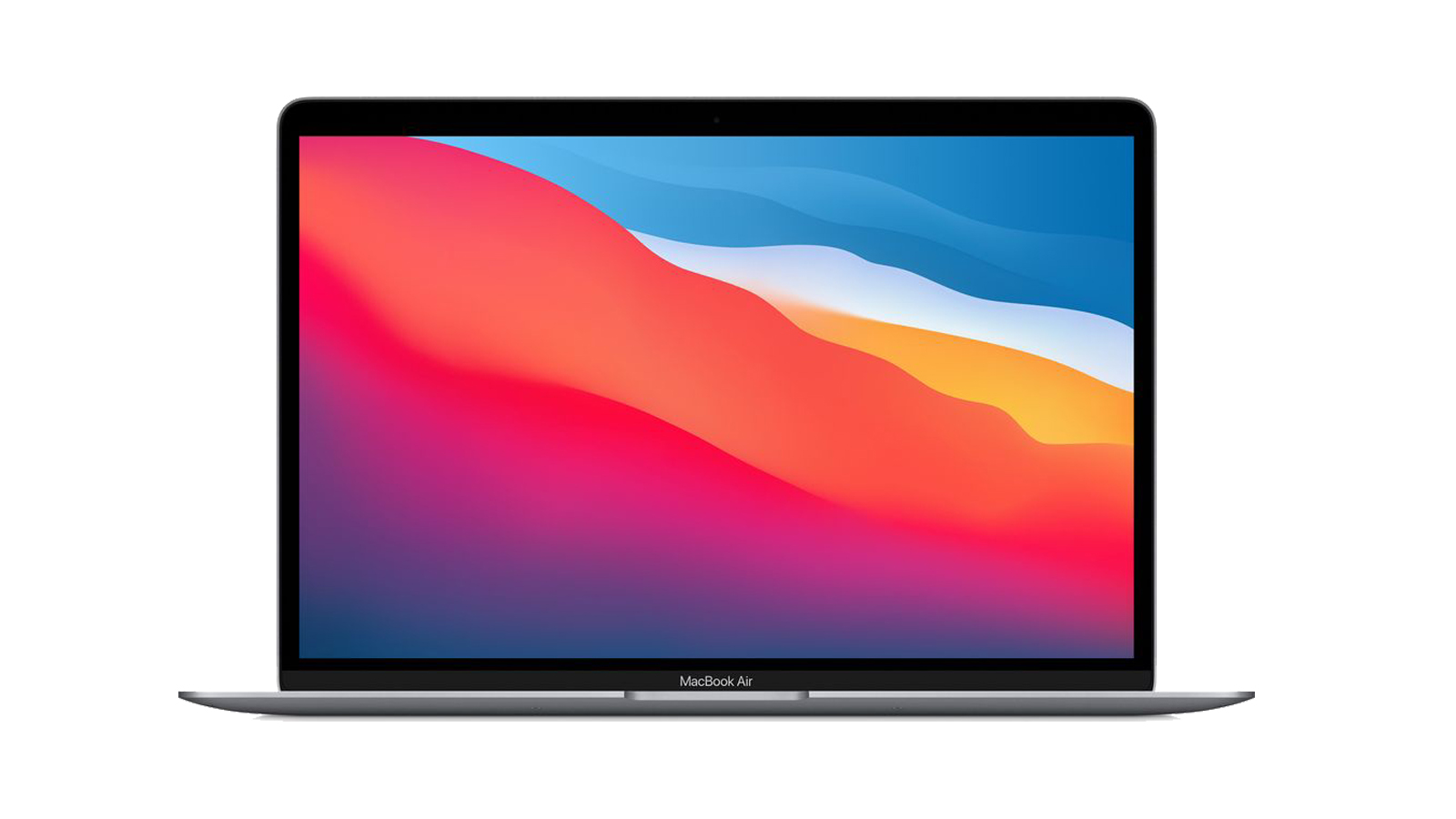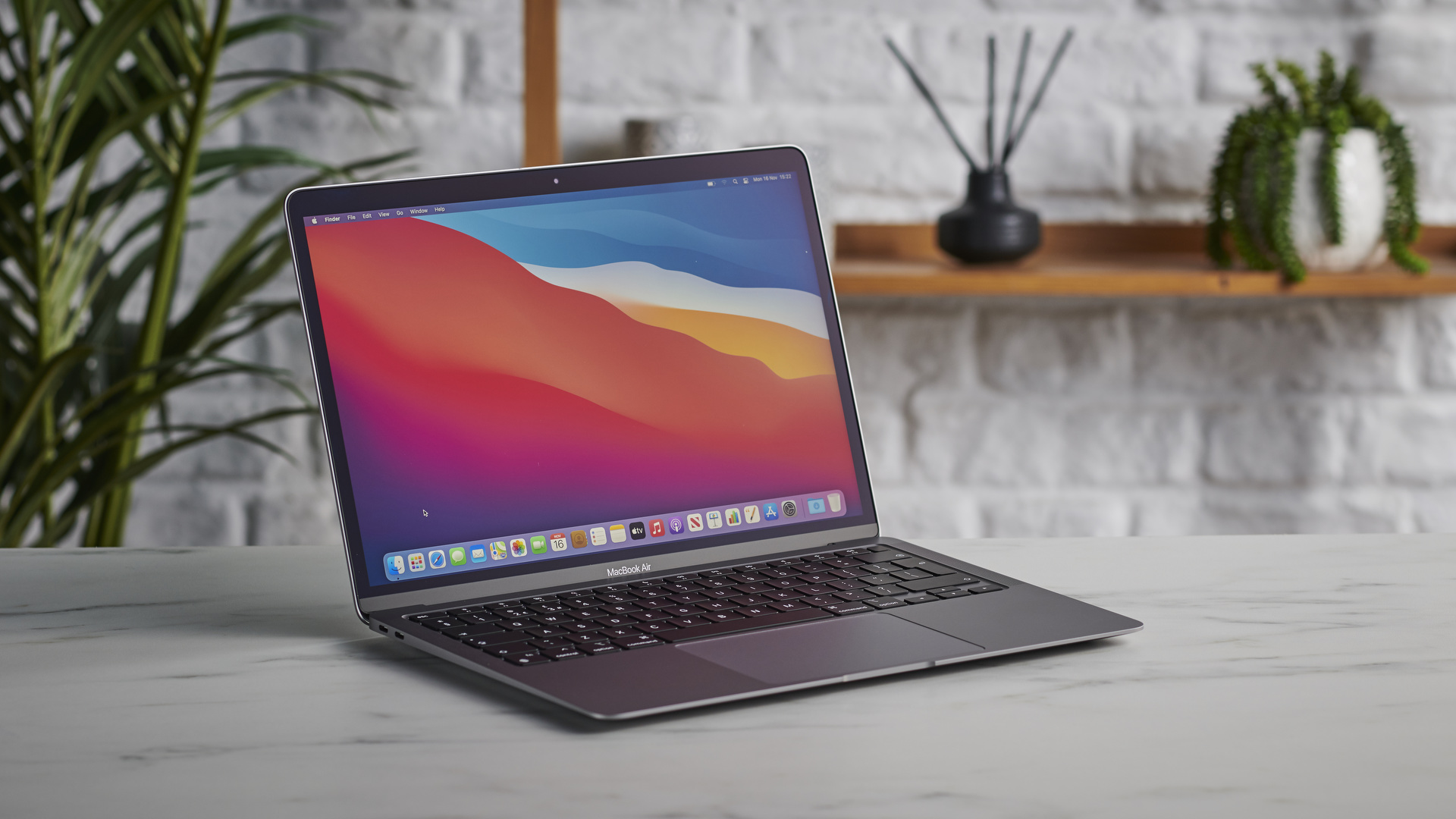MusicRadar Verdict
It might not be a ‘pro’ laptop, but the M1 MacBook Air still gives you an awful lot of music production bang for your buck.
Pros
- +
Well-built, compact and good looking
- +
The M1 chip is blazingly fast
- +
The most affordable MacBook you can buy
Cons
- -
Only two ThunderBolt ports
- -
A new design can't be far off
- -
RAM and storage upgrades are expensive
MusicRadar's got your back
Apple M1 MacBook Air review: What is it?
BEST OF 2021: Launched in November 2020, the M1 MacBook Air was part of the first tranche of new Macs that saw Apple transitioning away from Intel processors to its own silicon hardware. This also contained the 13-inch M1 MacBook Pro and an M1 Mac mini.
More recently, the M1 chip has been used in the next generation of iMacs and the iPad Pro, marking the first time that Apple has used a ‘Mac’ processor in one of its mobile devices. And, just in, there are even faster M1 Pro and M1 Max chips on the way for new MacBook Pros.
The M1 MacBook Air is the cheapest of Apple’s current laptops, with prices starting at $999/£999. This gets you a machine with an 8-core CPU, 7-core GPU and 16-core Neural Engine, along with 8GB of RAM and 256GB of storage. Neither the memory or SSD can be upgraded later on, so you need to think carefully about your requirements before you buy.
The model we’re looking at here is the pricier M1 MacBook Air that has an 8-core CPU, 8-core GPU and 16-core Neural Engine. There’s 8GB of RAM and 512GB of storage, which can be expanded to 16GB and 2TB respectively.

Whichever model you choose, you’ll get a 13.3-inch Retina Display, Touch ID and the promise of up to 18 hours of battery life. Unlike on the MacBook Pro, there’s no Touch Bar.
Connectivity is limited to two Thunderbolt/USB 4 ports - it’s worth noting that one of these is used for the power adapter, when it’s required - and a 3.5mm headphones output. Built-in audio is covered by stereo speakers and a three-mic array, and there’s a 720p front-facing FaceTime HD camera for video calls.
Finally, you get Apple’s latest Backlit Magic Keyboard and a Force Touch trackpad.
Want all the hottest music and gear news, reviews, deals, features and more, direct to your inbox? Sign up here.
Apple M1 MacBook Air review: Performance & verdict
Apple has a reputation for making computer hardware that looks and feels good, and the M1 MacBook Pro certainly lives up to it. Design-wise, nothing has really changed since the previous model, so you get a light, slim, wedged-shaped aluminium laptop that, in terms of aesthetics, puts the majority of PC notebooks to shame.
On the downside, the bezels around the display are looking a bit chunky these days, particularly when you compare them to those on Dell’s latest XPS 13 machines, which get far closer to offering ‘edge-to-edge’ screens.
We’ve got no complaints about the keyboard, though, which, despite being relatively compact, is lovely to type on, and the trackpad is a reliable performer, too.

Dell XPS 13
Apple M1 MacBook Pro
Apple M1 Mac mini
Built-in laptop speakers are notoriously poor, but the MacBook Air’s are pleasantly listenable, with no noticeable distortion when you crank up the volume. You’re not going to use them for mixing, but for playing music while you’re working, they’re definitely up to snuff.
So far, so good, but, for musicians, it’s really all about the performance. To test this, we loaded the same Logic Benchmark test project (available on Music-Prod) as we used when we reviewed the 13-inch M1 MacBook Pro. This contains 128 duplicated tracks, each playing a chord using the Logic Sculpture synth loaded with five effects.
We managed to get the M1 MacBook Pro with 16GB RAM to reliably play back 106 tracks, with our M1 MacBook Air, which contains only 8GB RAM, managing 98. We’d say that’s a pretty impressive result when you consider that this is an ‘entry-level’ MacBook that isn’t actually designed for the ‘pro’ market.
And that brings us to the nub of the matter: while pro producers aren’t likely to choose the M1 MacBook Air, if you’re looking for your first music-making laptop, and want something that will also work brilliantly as an ‘everyday’ machine, it’s hard to beat. Yes, you can’t have more than 16GB RAM, and the lack of a fan (which the M1 MacBook Pro does have, by the way) might concern you if you consider yourself a ‘power’ user, but you’re still going to have to go some to take this machine beyond its limits.

What’s more, software compatibility is no longer the issue it once was, with more and more DAWs and plugins now offering native M1 support (Ableton Live 11.1, which adds this, is now in beta, for example).
Put simply, the M1 MacBook Air gives you an awful lot of what you do want and not a lot that you don’t (we’re looking at you Touch Bar), and if you ever do decide that you need something more powerful, the fact that Apple’s laptops hold their value will stand you in good stead when you come to sell it. Yes, there are some drawbacks - only two Thunderbolt/USB ports and a design that’s likely to be superseded pretty soon - but the M1 MacBook Air remains a bit of a bargain.
Apple M1 MacBook Air review: Hands-on reviews
Ave McRee
Techkhamun
Apple M1 MacBook Air review: Specifications
- Key features: Apple M1 chip with 8-core CPU, 8-core GPU and 16-core Neural Engine, up to 16GB RAM, up to 2TB SSD, 13.3-inch Retina display with True Tone, Backlit Magic Keyboard, Touch ID, Two Thunderbolt / USB 4 ports
- Contact: Apple

I’m the Deputy Editor of MusicRadar, having worked on the site since its launch in 2007. I previously spent eight years working on our sister magazine, Computer Music. I’ve been playing the piano, gigging in bands and failing to finish tracks at home for more than 30 years, 24 of which I’ve also spent writing about music and the ever-changing technology used to make it.
